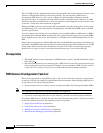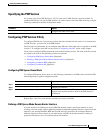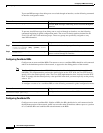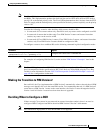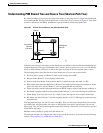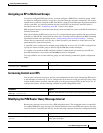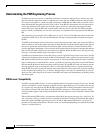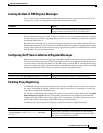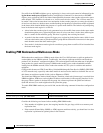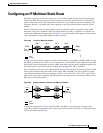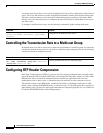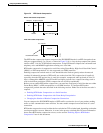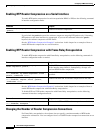
Configuring IP Multicast Routing
Advanced PIM Features Configuration Task List
IPC-426
Cisco IOS IP Configuration Guide
Understanding the PIM Registering Process
IP multicast sources do not use a signalling mechanism to announce their presence. Sources just send
their data into the attached network, as opposed to receivers that use IGMP to announce their presence.
If a source sends traffic to a multicast group configured in PIM-SM, the DR leading toward the source
must inform the RP about the presence of this source. If the RP has downstream receivers that want to
receive the multicast traffic (natively) from this source and has not joined the shortest path leading
toward the source, then the DR must send the traffic from the source to the RP. The PIM registering
process, which is individually run for each (S, G) entry, accomplishes these tasks between the DR and
RP.
The registering process begins when a DR creates a new (S, G) state. The DR encapsulates all the data
packets that match the (S, G) state into PIM register messages and unicasts those register messages to
the RP.
If an RP has downstream receivers that want to receive register messages from a new source, the RP can
either continue to receive the register messages through the DR or join the shortest path leading toward
the source. By default, the RP will join the shortest path, because delivery of native multicast traffic
provides the highest throughput. Upon receipt of the first packet that arrives natively through the shortest
path, the RP will send a register-stop message back to the DR. When the DR receives this register-stop
message, it will stop sending register messages to the RP.
If an RP has no downstream receivers that want to receive register messages from a new source, the RP
will not join the shortest path. Instead, the RP will immediately send a register-stop message back to the
DR. When the DR receives this register-stop message, it will stop sending register messages to the RP.
Once a routing entry is established for a source, a periodic reregistering takes place between the DR and
RP. One minute before the multicast routing table state times out, the DR will send one dataless register
message to the RP each second that the source is active until the DR receives a register-stop message
from the RP. This action restarts the timeout time of the multicast routing table entry, typically resulting
in one reregistering exchange every 2 minutes. Reregistering is necessary to maintain state, to recover
from lost state, and to keep track of sources on the RP. It will take place independently of the RP joining
the shortest path.
PIM Version 1 Compatibility
If an RP is running PIM Version 1, it will not understand dataless register messages. In this case, the DR
will not send dataless register messages to the RP. Instead, approximately every 3 minutes after receipt
of a register-stop message from the RP, the DR encapsulates the incoming data packets from the source
into register messages and sends them to the RP. The DR continues to send register messages until it
receives another register-stop message from the RP. The same behavior occurs if the DR is running PIM
Version 1.
When a DR running PIM Version 1 encapsulates data packets into register messages for a specific (S, G)
entry, the entry is process-switched, not fast-switched or hardware-switched. On platforms that support
these faster paths, the PIM registering process for an RP or DR running PIM Version 1 may lead to
periodic out-of-order packet delivery. For this reason, we recommend upgrading your network from PIM
Version 1 to PIM Version 2.



